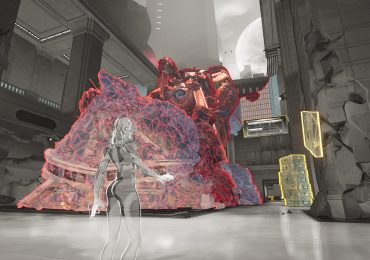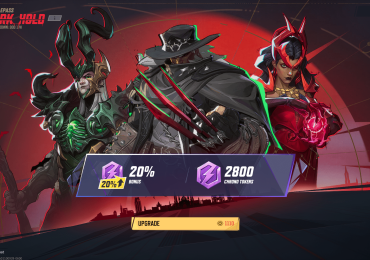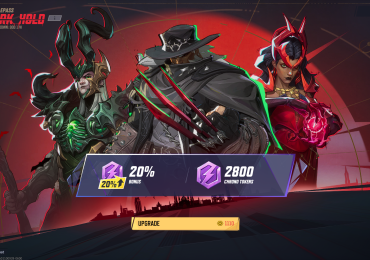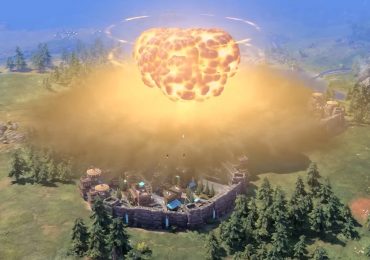
Game File is a thrice-weekly newsletter about the culture and business of video games, written by longtime gaming reporter Stephen Totilo (Kotaku, Axios, MTV News, The New York Times). Subscribe here for scoops, interviews and regular updates about gaming with the author’s nearly 8-year-old twins.
There’s a lofty reason for all the water in Monument Valley 3, next week’s long-awaited sequel to the beloved puzzle game series about climbing optical illusions.
And there’s a personal motivation.
The lofty? Monument Valley 3 comes from Ustwo Games, which promotes itself as “the world’s first B-Corp game studio.” That’s a private designation earned by for-profit businesses that are focused on doing environmental and social good–something Monument Valley 3 has at least been partially designed to accomplish.
As the water rises around one of the puzzle towers in the game’s water-covered world, Monument Valley 3’s designers hope you’ll notice. Maybe you’ll think about rising sea levels. Maybe you’ll look up what you can do about it.
The message is even more explicit at the top of the game’s credits, before the list of developers’ names:
“Worldwide, 1.81 billion people face intense flooding risk. Ustwo Games stands with flood relief programs.”
The studio provides a link for more information.
As for the more personal reason, consider the sequel’s handful of new levels that are set across a sailable sea, where players can pilot a boat, dock on an island, and climb. It is no coincidence that Monument Valley 3 game director Jennifer Estaris used to live in the Danish “canal community” of Sluseholmen, where she could jump from her balcony into the water and where she would kayak her daughter to school.
“It was quite idyllic,” she told me earlier this week over a video call. “I wanted to allow those elements to live in the game and to share what was special about that life with others.”
Monument Valley 3 is a video game, which means it is a thing of art and commerce. It was created by a B Corp, yes, but it is also published by the more familiar megacorp kind of corp that is Netflix. You’ll have to have a subscription to that corp if you want to download and play this phone and tablet game (iOS and Android, Dec. 10).
And, yes, you might have heard other game developers speak positively about the impact they hope their games will have on players or even the planet. Rare is the game-maker who hypes their new sequel as an instrument of misery.
Nevertheless–and at the risk of boring readers with good vibes– the context around Monument Valley 3 is uncommonly positive.
The game’s creation was not without hardships: gaming is a tough industry, the mobile gaming scene is its own form of drowning sea, and Estaris, whose LinkedIn lists one of her prior game dev jobs as “imaginary cartwheeler,” is not in fact always tumbling with glee.
But there really is a lot of positivity around this project.
Estaris speaks of Monument Valley as “a game that reaches people not just in terms of their minds, but also reaches hearts.”
The new game is a sequel borne from a study of spiritual successors. Estaris said her team looked at trilogies but was more drawn to games with looser connections to their past–like Sky: Children of Light following Journey–to see how much you can push the limit of what people know a game series to be.
Her team started making Monument Valley 3 more than three years ago, experimenting with a first-person perspective, with multiplayer, and player-created levels. They split into three “pods” to explore gameplay around sailing, around user-generated content and around village life (“a lot of us were playing Animal Crossing because it came out during the pandemic”). The sailing worked best, though touches of the other two made it into the finished game.
The development team was different from the gaming industry standard, which you could discern from a group photo or from MV3’s credits, which start with the note about flooding and then unfurl a list of names that includes a Lili, an Emily, a Mairi and a Holly.
When asked about this, Estaris acknowledged that it’s the most women she’s worked with on a game team in ages, and then quickly shared that the team was diverse culturally, too.
“It was just lovely to hear all these voices,” she said, attributing touches in the new game to the mix of backgrounds on the team. She pointed to Monument Valley 3’s abundance of softer and more organic shapes and its more far-fung inspiration for its architecture. (Our conversation was briefly, accidentally interrupted by the game’s finance manager; he’s from Nigeria, Estaris mentioned, and helped inspire buildings in the game that are based on Hausa architecture).
When discussing Monument Valley 3’s soundtrack, Estaris noted the inclusion of instruments that are “lesser heard,” including the kora from west Africa and bamboo flutes from Laos and Thailand.
None of these touches were forced, she said. “It was just natural to us.”

Image: Ustwo Games/Netflix
The Monument Valley 3 team made a denser sequel. There are more puzzles per chapter than in the series’ prior games, but the developers worked to keep the new release breezy and run fairly short. This third game, like its predecessors, can be finished in a couple of hours.
“Some of our players have talked about replaying the previous two because it gave them this kind of mental, meditative experience,” Estaris said. “We wanted to allow players to continue to do that.”
Monument Valley 3 will get longer. It launches next week with 10 chapters but displays placeholders for four more, meant to “slow-drip” through winter 2025. That’s partially inspired, Estaris said, by a comment from a player who mistook all of Monument Valley 2’s levels for a tutorial and then found themselves without more to play.
Estaris has worked on games that have expansions and “live ops” elements for over a decade (her previous gig was the ubiquitous mobile smash Subway Surfers, which has also dabbled with environmentally conscious messaging among its updates). Expanding a game is what she’s used to. Listening to player feedback to help shape the new chapters is the norm. “That, to me, is jazz,” she said, describing games-as-a-service in a way no Call of Duty-promoting executive may ever have. “I get to hear what the player is interested in, and I got to…not change, but maybe help support what excites them about the game.”
Estaris joined Ustwo several years ago, she said, because “I wanted to be a part of a studio that was also working on games that are important to the well-being of the world.”
Making a game with a message matters. It might help make a difference, too, she said: “I think there are different approaches to this culture shift that may need to happen, in order for there to be a more sustainable future.”
More from Game File
- A wildly popular pandemic video game gets a surprise sequel
- A win for U.S. gamers with disabilities was just reversed








